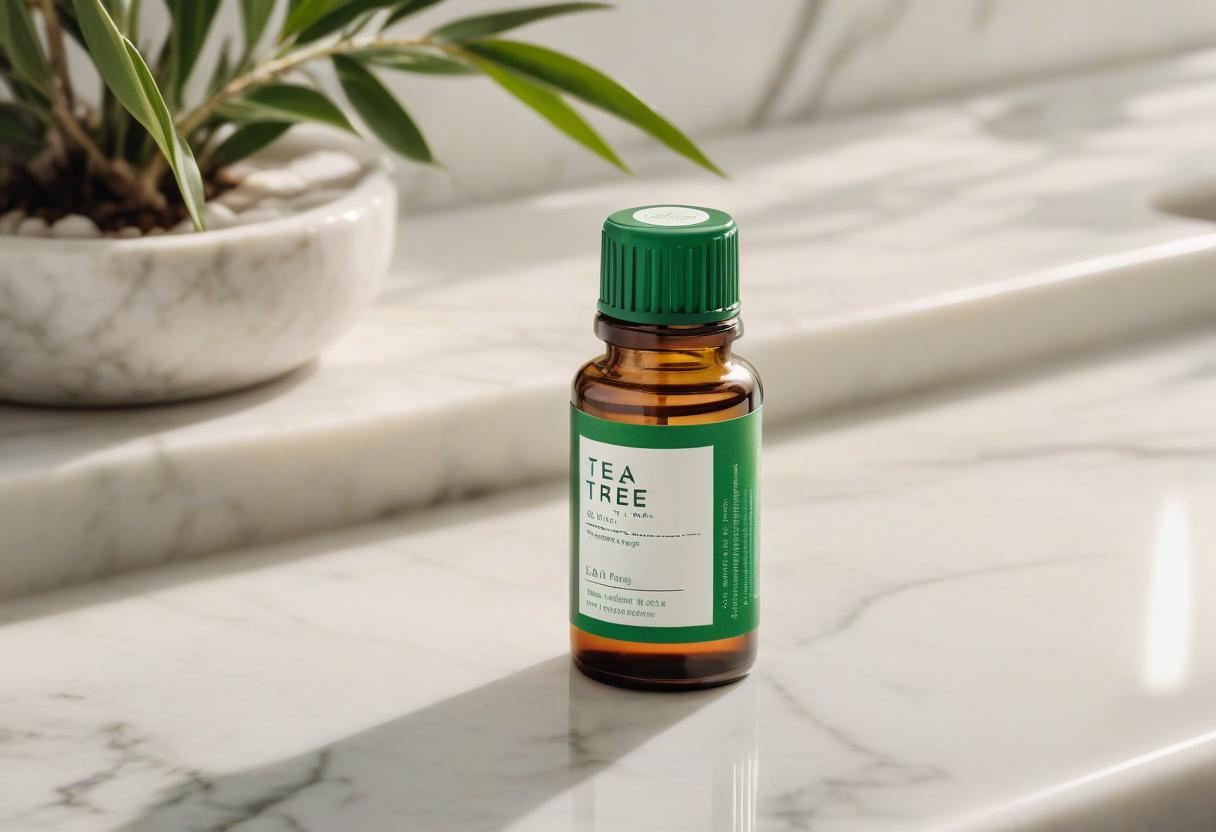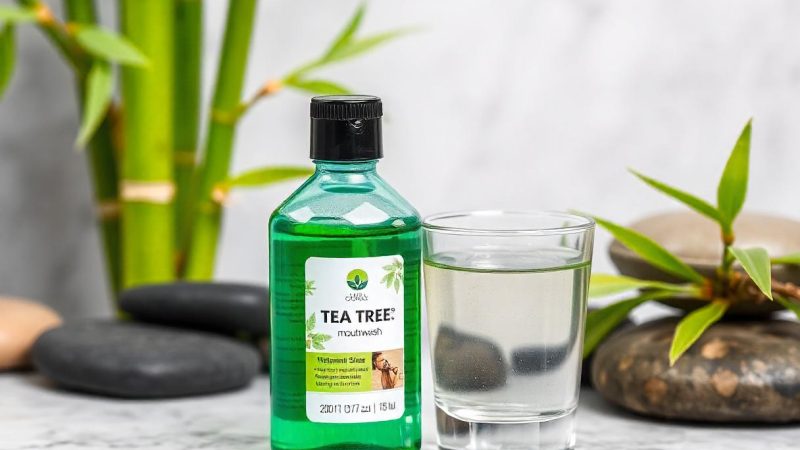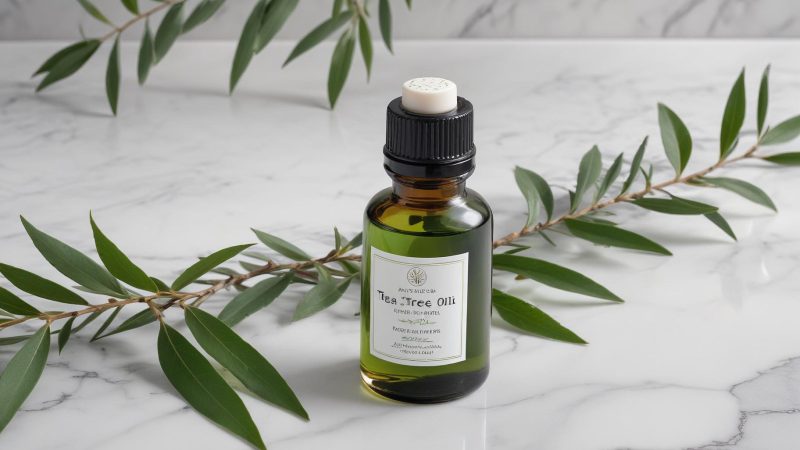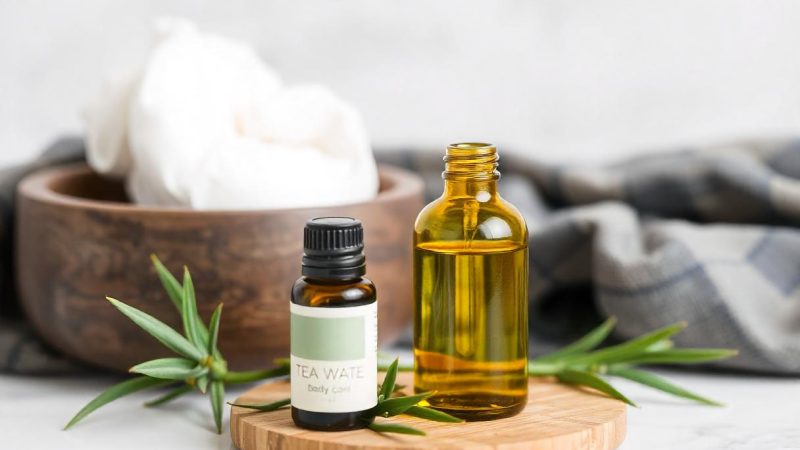Tea Tree Oil for Faster Wound Healing: Reduce Inflammation and Promote Recovery

Wound healing is a complex process that involves inflammation, tissue repair, and regeneration. Tea tree oil, an essential oil derived from the leaves of the Melaleuca alternifolia tree, has gained recognition for its potential to enhance wound healing due to its anti-inflammatory, antimicrobial, and regenerative properties. This article explores how tea tree oil contributes to faster wound healing, provides practical application tips, and highlights essential safety considerations.
How Tea Tree Oil Promotes Wound Healing
- Anti-Inflammatory Effects
Inflammation is a natural part of the wound healing process but excessive inflammation can delay healing and increase discomfort. Tea tree oil contains compounds like terpinen-4-ol and 1,8-cineole, which have demonstrated significant anti-inflammatory effects. These compounds help reduce redness, swelling, and pain associated with wounds.
A study published in The Journal of Dermatology highlights tea tree oil’s ability to modulate inflammatory responses and provide relief from inflammation. By controlling inflammation, tea tree oil can promote a more efficient and comfortable healing process.
- Antimicrobial Action
Infections are a common complication in wound healing and can significantly delay recovery. Tea tree oil exhibits broad-spectrum antimicrobial properties that make it effective against a range of bacteria, fungi, and viruses. The oil’s key component, terpinen-4-ol, disrupts the cell membranes of pathogens, inhibiting their growth and preventing infections.
Research published in Clinical Microbiology Reviews emphasizes tea tree oil’s efficacy in preventing and treating infections, which is crucial for ensuring optimal healing of wounds.
- Promotes Tissue Repair
Tea tree oil also supports tissue repair and regeneration, essential components of the healing process. It has been shown to enhance collagen synthesis and support cellular regeneration, which helps in the formation of new, healthy tissue.
A study in Phytotherapy Research found that tea tree oil’s application can accelerate wound closure and improve the quality of newly formed tissue, aiding in faster and more effective wound healing.
How to Use Tea Tree Oil for Wound Healing
- Diluted Application
Tea tree oil should be diluted before applying it to wounds to avoid irritation. A common dilution ratio is 1-2 drops of tea tree oil mixed with a carrier oil such as coconut oil, olive oil, or almond oil.
How to Use:
- Mix 1-2 drops of tea tree oil with 1 tablespoon of a carrier oil.
- Gently apply the mixture to the clean wound using a sterile cotton ball or swab.
- Cover the wound with a clean, non-stick bandage.
- Reapply 1-2 times daily, especially after cleaning the wound.
- Tea Tree Oil and Aloe Vera Gel
Combining tea tree oil with aloe vera gel can enhance its soothing and healing effects. Aloe vera is known for its anti-inflammatory and skin-repairing properties, which complement tea tree oil’s benefits.
How to Use:
- Mix 5 drops of tea tree oil with 2 tablespoons of aloe vera gel.
- Apply the mixture to the wound and surrounding area.
- Allow it to dry and cover with a sterile bandage if needed.
- Use this treatment 1-2 times daily to promote healing and reduce inflammation.
- Tea Tree Oil and Honey
Honey is another natural remedy known for its wound-healing properties. Combining tea tree oil with honey can provide additional antimicrobial and healing benefits.
How to Use:
- Mix 1 tablespoon of honey with 2-3 drops of tea tree oil.
- Apply the mixture to the wound and cover with a clean bandage.
- Change the dressing and reapply the mixture 1-2 times daily.
Safety and Precautions
- Dilution is Crucial
Tea tree oil is highly concentrated and can cause skin irritation if used undiluted. Always mix it with a carrier oil or suitable solution before applying it to wounds. Perform a patch test on a small area of skin to check for any sensitivity or allergic reactions before broader application.
- Consult a Healthcare Professional
While tea tree oil can be a beneficial adjunct in wound care, it should not replace conventional medical treatment for serious wounds or infections. Consult with a healthcare provider for guidance, especially if you have underlying health conditions, are pregnant or breastfeeding, or if the wound shows signs of severe infection.
- Avoid Sensitive Areas
Avoid applying tea tree oil to sensitive areas or open, large, or deep wounds. Use caution when applying it to the face or mucous membranes.
- Monitor for Side Effects
Some individuals may experience side effects such as redness, itching, or a burning sensation. If any adverse reactions occur, discontinue use and seek medical advice.
- Proper Wound Care
Ensure that the wound is clean and properly managed before applying tea tree oil. Follow standard wound care practices, including cleaning the wound with mild soap and water, and applying sterile dressings.
Final Thoughts
Tea tree oil offers a natural and effective approach to enhancing wound healing with benefits including anti-inflammatory, antimicrobial, and tissue-repairing effects. When used correctly, tea tree oil can help reduce inflammation, prevent infections, and support faster recovery. However, it is essential to use tea tree oil with proper dilution, adhere to safety precautions, and consult with a healthcare provider to ensure comprehensive and effective wound care.
Incorporating tea tree oil into your wound care routine can support the healing process and promote better outcomes. Always follow safety guidelines and seek professional medical advice for optimal results in managing wounds.
Sources:
- The Journal of Dermatology. (2000). Anti-inflammatory effects of tea tree oil in skin conditions.
- Clinical Microbiology Reviews. (2006). Antimicrobial properties of tea tree oil and its clinical applications.
- Phytotherapy Research. (2006). Enhancing wound healing with tea tree oil.
- Journal of Wound Care. (2012). Tea tree oil in wound management: An evidence-based review






